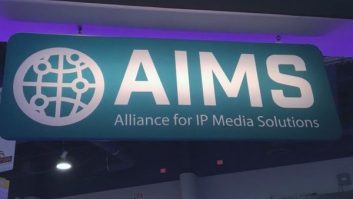There has been a lot of cynicism around using IP for contribution and production. While for some that cynicism remains, the technology is improving and already reaching many millions of viewers on a daily basis. This, coupled with the fact that most people are already watching on an IP enabled device, such as their phone or tablets, means that video providers are beginning to consider IP as the de facto form of contribution and soon production.
However, there remain some challenges to overcome which include reducing latency, but are mainly caused by an unwavering mindset.
Increasing Adoption
Over the last few years, we have seen a big growth in IP connectivity. More and more places across the globe are connected, often with business-grade connectivity. This doesn’t necessarily mean typical broadcast quality connectivity however so many high end providers are not ready to move to IP. Instead, at the high end of the market, the video provider will generally use traditional satellite or private fibre connectivity. However, what we are seeing is a rise of providers especially in the mid-end of the market, looking to get more content to viewers and on more platforms. They are also looking to increase engagement, which is being achieved in a number of ways, including delivering multiple camera angles from live events and getting highlights out quicker. This is the kind of case where we see IP connectivity being used more and more.
At the same time, technology cycles are moving much more quickly these days and this is being driven by a growing need for instant coverage while keeping costs low. In the case of IP, the rise in breaking news, especially in the UK at the moment, is having a particular impact and has really accelerated the push of IP over the last few years.
Latency and Quality
Latency and quality are often cited as the main reason for not moving to IP. However, we are used to using satellites in the field and there is inherent latency with sending something into space. Ultimately, the latency challenges with IP are not as bad as people think. A lot of that comes down to shifting the mindset.
We know that big amounts of latency is a concern for video providers so it is something we have been working hard to reduce. Our latest software gets end-to-end latency down to just 60 milliseconds, one of the lowest latencies achievable in the industry across any full-frame contribution encoder. We can do this whilst not compromising on picture quality.
That said many current workflows still base themselves around traditional broadcast production latencies when the end user is now watching on an OTT device, where the downstream OTT workflow has tens of seconds of latency or sometimes even minutes. One can argue that saving milliseconds of latency during the production and contribution process makes limited difference to the overall latency.
Compressed vs Uncompressed
The choice between compressed and uncompressed can be quite confusing and it depends on what the operational goals are. Sometimes broadcasters may use compressed video using cloud playout to maximise flexibility, but then distribute it at the final stage using traditional broadcast technologies such as SDI. Currently, we see a real mixture from our customers in terms of compressed vs uncompressed. Some operators want traditional feeds, but some, especially the large ones, take content and keep it in the compressed domain. In many cases, operators want the best of both and actually will take in compressed feeds and treat them as uncompressed. Staying uncompressed is beneficial when there is significant downstream picture processing such as graphics insertion. Both types of workflow have their pros and cons and it is important that the decision is made carefully.
Standards
Along with mindsets, standards is by far the biggest barrier to IP adoption right now. The SMPTE ST2110 standard is the most commonly associated standard for compressed video. However, as with many video standards, it is not designed for Cloud usage at all. Unfortunately, it’s a standard which is really designed for the past, not for today and certainly not for the next 40 years. It comes with a lot of legacy baggage and is simply put not flexible enough to adapt to new methods of contribution. Even with on-prem deployments there are significant interoperability challenges between equipment, especially with the numerous methods of handling audio.
Standards need to evolve. Uncompressed content within the cloud, and cloud facilities generally, are designed for other IT processes, not for broadcast, and there is definitely something missing from the uncompressed domain.
The Reliable Internet Stream Transport (RIST) protocol is going the right way to give providers something to work towards that is actually designed for the IP domain. It is a protocol for interoperable low latency contribution (compressed) quality video via unmanaged networks, including the internet. It is based on the Video Services Forum’s TR-06-1 technical recommendation document and the collaboration of all leading vendors and global broadcast operators. What it does is gives us a simple yet highly effective method for interchanging professional signals between different vendors.
It is clear that standards are needed but what we have currently is simply not designed for today’s TV environment. I sincerely hope the cloud playout standards come up with their own, even non cloud-native, something that works for the mainstream but works for the uncompressed domain.
The Right Skills
As the broadcast world becomes more IP-centric, traditional broadcast engineers are having to learn a whole new way of operating broadcast networks. This is leading to an education problem, giving those people the skills needed to operate in an IP setting. Unfortunately, there isn’t much in the way of detailed information about IP, which further aggravates that problem. Things like PTP are very complicated to understand and there is no simple solution to grasp it. Identifying and resolving faults is an area that is especially challenging at the moment, so it is understandable that broadcasters could be reticent to make the move.
IT or network engineers have a different way of working and can do so some things that broadcasters, for example, may never be able to do. We need to find a way to unify these worlds and the broadcast industry is going to need more network experts in order to effectively embrace IP in all its glory.
Changing Mindsets
Before IP contribution goes fully mainstream there needs to be a major shift in mindsets. Television is changing and a lot more people are watching on IP-enabled devices. The technology is ready to capture and deliver broadcast using IP and there are some great success stories of its use. Now we just need traditional broadcasters to fully understand it in order to maximise its potential.
Ultimately, there are different realms at play here and different schools of thought between the modern forward-thinking people and companies and the traditional ones who are much more set in their ways. IP adoption is being driven by consumer habits and expectations and technology emerging from the west coast of America. The television industry now needs to keep up and follow these developments.







